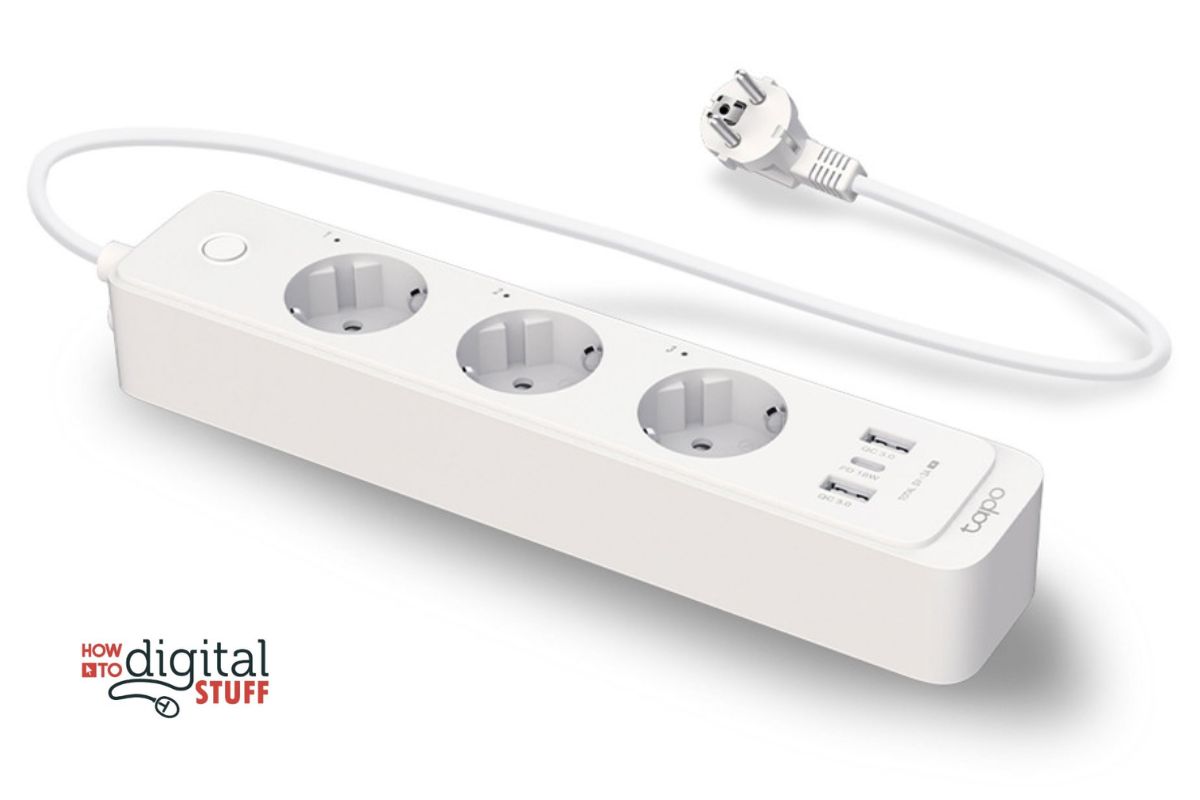Smart power strips offer a range of features that go beyond simply providing electricity to your devices. From individual outlet control to energy monitoring and automation, these smart home devices are revolutionizing the way we manage energy consumption and enhance convenience in our homes and offices. Let’s see what a smart power strip is, how it works, and how it differs from a regular power strip.
A Smart Power Strip is a hub for connecting multiple electronic devices to a single power source, with the ability to control power usage remotely. The key factors that make this power strip smart are individual outlet control, energy monitoring, scheduling, and automation.
Let’s see why smart power strips are a promising technology in the Smart Home realm, and how they help people save money, reduce energy waste, and make their lives more convenient.
What is the difference between a smart power strip and a regular power strip?
While both types of power strips serve the same basic purpose of providing multiple outlets for electronic devices to be plugged into a single power source, there are several key differences between the two:
- Remote Control and Automation: Smart power strips can be controlled remotely, often through a proprietary smartphone app or a voice assistant like Amazon Alexa or Google Assistant. This means users can turn outlets on or off from a distance, schedule when outlets are active, or even automate actions based on certain triggers. Regular power strips lack these remote control and automation features.
- Energy Monitoring: Smart power strips often include energy monitoring features, allowing users to track the energy consumption of individual devices plugged into the strip. One example is the Kasa Smart Power Strip HS300 – it is a smart power strip with integrated energy monitoring. It can help users identify how much energy is used per connected device and make informed decisions about their usage. Regular power strips typically do not offer this capability.
- Individual Outlet Control: Smart power strips often have the ability to control each outlet individually. This means users can turn off specific outlets while leaving others powered on. This feature is especially useful for people who are frequently away from home or have multiple devices that need to be managed. Regular power strips generally control all outlets simultaneously – they are either all ON or OFF.
- Convenience Features: Smart power strips may offer additional convenience features such as timers, surge protection, and compatibility with Smart Home ecosystems. These features enhance usability and functionality beyond simply providing multiple outlets. Regular power strips may offer surge protection or timers, but they can’t be integrated into any Smart Home system for example.
How Does a Smart Power Strip Work?
A smart power strip works by integrating advanced technology to provide remote control and automation capabilities for connected electronic devices.
Similar to smart plugs, it connects to a Wi-Fi network, enabling communication with other devices like smartphones or smart home hubs. Users can then control the power strip’s functions through a companion smartphone app, allowing them to remotely turn outlets on or off, set schedules for when outlets should be active, monitor energy usage, and even receive notifications or alerts related to power consumption.
Additionally, smart power strips may integrate with voice assistants like Amazon Alexa or Google Assistant, enabling voice control and the creation of automation routines. This combination of features provides users with greater control, energy efficiency, and convenience in managing their electronic devices and power usage.
Are Smart Power Strips Energy Efficient?
Smart Power Strips are generally energy efficient due to their ability to remotely control power usage, monitor energy consumption, and automate device schedules. By enabling users to remotely turn off devices when not in use, set schedules for when outlets should be active, and monitor energy usage, smart power strips help reduce standby power consumption and eliminate unnecessary energy usage.
One of the key benefits of smart power strips is their ability to reduce energy waste. Traditional power strips often leave devices plugged in and powered on even when they are not in use.
A practical example would be this one: let’s say that you have a TV, sound system, and cooling fan connected to a smart power strip. You can set a schedule where all three go off at 11 pm. This way you save even on the energy spent in standby mode by all of them. This not only saves energy but also helps to extend the lifespan of devices by preventing unnecessary wear and tear.
Additionally, their individual outlet control feature allows for more precise energy management, ensuring that only necessary devices are consuming power at any given time. While smart power strips themselves may consume a small amount of electricity in standby mode, the energy savings achieved by efficiently managing the power usage of connected devices typically outweigh this standby power consumption, making them a valuable tool for promoting energy efficiency in homes and workplaces.
Does a smart power strip use electricity when off?
Smart power strips typically consume a small amount of electricity even when they are turned off. This is because they need a minimal amount of power to maintain their internal circuitry and to be ready to respond to commands from the user or connected devices.
In general, the standby power consumption of a smart power strip is relatively low, typically ranging from around 0.1 watts to 1 watts.
To put this into perspective, if a smart power strip consumes 1 watt of standby power and is left plugged in 24/7 for a year, it would consume approximately 8.76 kilowatt-hours (kWh) of electricity over the course of a year. The average US home consumes 1100 kWh of vampire energy per year according to the U.S. Energy Information Administration.
The amount of electricity consumed while in standby mode is generally very low compared to the power consumption of the devices plugged into the power strip. However, over time, this standby power consumption can contribute to overall energy usage.
Smart Power Strip connectivity
Smart power strips come with a range of connectivity options that allow them to be integrated into a smart home ecosystem. Some of the most common connectivity options include:
Wi-Fi: Smart power strips with Wi-Fi connectivity can be controlled using a smartphone app. This allows users to turn off power to connected devices from anywhere with an internet connection. In simple words, your smart power strip is connected to your home WIFI network, and you can control it from your smartphone wherever you are.
Voice control: Some smart power strips can be controlled using voice commands through a Smart Speaker (Amazon Echo, Google Nest, etc.) or Virtual Assistant (Amazon Alexa, Google Assistant, etc). This feature is particularly useful for users who want to control their devices hands-free.
Zigbee/Z-Wave: Smart power strips with Zigbee or Z-Wave connectivity can be integrated into a larger smart home network. This allows them to be controlled alongside other smart devices, such as lights or thermostats.


